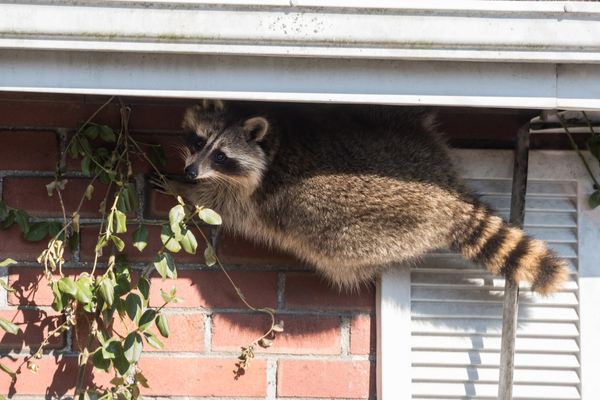Winter and early spring are peak seasons for animal damage to your home. Cold weather drives animals inside where they make dens and nests to raise their young in the spring. According to Today’s Homeowner, the usual animal suspects include:
- Squirrels: Damage from squirrels comes mostly from chewing exterior trim, siding, shutters, and vents. If squirrels manage to get inside your walls or attic, they can cause extensive damage to insulation, wiring, plumbing, and stored items. You don’t even want to know what they can do if they manage to get inside your home!
- Mice and Rats: Like squirrels, mice and rats can chew the building materials and stored items in your attic to shreds for nesting materials. Rodents are particularly prone to chewing wiring, which can damage your electrical system and result in a potential fire hazard.
- Raccoons: While cute to look at, raccoons can do a great deal of damage trying to gain entry to your attic and wall spaces – such as ripped fascia boards, torn soffits and shingles, and broken vents. Once inside, the masked bandits can turn your attic into a war zone by shredding insulation and damaging wiring and ductwork, as well as spreading fleas and other pests.
- Opossums: These animals, like raccoons, will do whatever it takes to get inside your attic, basement, playhouse, or garden shed. Once they’ve settled into their new home, they’ll bring in all sorts of food scraps and garbage to rot and smell up the place. And if that isn’t enough, opossums emit a nasty odor of their own that’s similar to a skunk.
Here are some Tips on how to Repair and Prevent Animal Damage, from the experts at Today’s Homeowner:
- Remove Animals: If you have animals nesting in your home, the first step is to call a licensed animal control professional to remove the animals. Don’t be tempted to simply wait for the animal to leave, then seal up the opening. Imagine the damage that can be caused by a panicked mother raccoon trying to get back inside to her babies you didn’t know were there!
- Seal Openings: Once your animal tenants have been evicted, seal any entry points with a hard, durable materials such as fiber cement, sheet metal, or auto body filler. Simply tacking the damaged boards back up won’t do.
- Cover Vents: All attic vents and openings, including gable and soffit vents along with power vent fans, should be backed with steel hardware cloth that’s firmly attached with screws. Make sure your chimney is capped and sealed off with hardware cloth as well.
- Trim Trees: Keep tree limbs cut back at least 6 to 8 feet from the roof and sides of your house to deter animals from climbing onto your roof or siding.
—
Photo Credit: Puffin’s Pictures / Shutterstock.com
